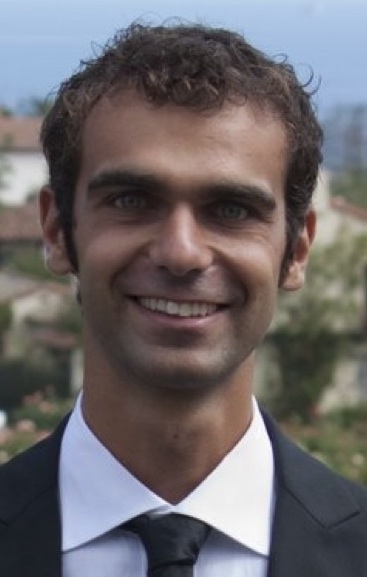Fall 2017 Joint CSC@USC/CommNetS-MHI Seminar Series
 |
Fabio Pasqualetti,
University of California, Riverside
|
Abstract
Synchronized behaviors among the nodes of a network are ubiquitous in nature and in several man-made systems. While some systems require complete synchronization among all the parts to function properly, others rely on cluster or partial synchronization, where subsets of nodes exhibit coherent behaviors that remain independent from the evolution of other nodes in the network. For example, while patterns of partial synchronization have been observed in healthy individuals, complete synchronization in neural systems is often associated with degenerative diseases including Parkinson's and Huntington's diseases, and epilepsy.
In this talk, I will present novel network-theoretic methods to predict and control the formation of synchronization patterns within a network of Kuramoto oscillators. I will show that exact patterns of synchronized oscillators are possible if and only if the interconnection structure and the oscillators satisfy certain stringent conditions. On the other hand, approximately synchronized patterns, which often appears in experimental time series, can emerge more easily depending on a graded combination of the interconnection structure and the intrinsic properties of the oscillators. Further, I will present structural control schemes to enforce the emergence of a desired synchronization landscape and, lastly, I will show how the proposed techniques find applicability in a broad class of network analysis and control problems.
Biosketch
Fabio Pasqualetti is an Assistant Professor in the Department of Mechanical Engineering, University of California, Riverside. He completed a Doctor of Philosophy degree in Mechanical Engineering at the University of California, Santa Barbara, in 2012, a Laurea Magistrale degree (M.Sc. equivalent) in Automation Engineering at the University of Pisa, Italy, in 2007, and a Laurea degree (B.Sc. equivalent) in Computer Engineering at the University of Pisa, Italy, in 2004. He received a Young Investigator Program Award from ARO in 2017, and the TCNS Outstanding Paper Award from IEEE CSS in 2016. His main research interest is in secure control systems, with application to multi-agent networks, distributed computing, and power networks. Other interests include computational neuroscience, vehicle routing, and combinatorial optimization, with application to distributed area patrolling and persistent surveillance.
